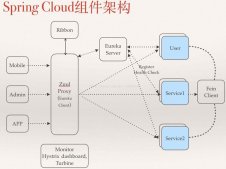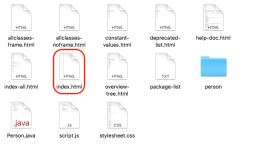spring 加载方式
对于可执行文件方式,我们一般的加载spring 配置的方式是
classpathxmlapplicationcontext
|
1
2
3
4
5
6
|
public static void main(string[] args) { classpathxmlapplicationcontext xmlapplicationcontext = new classpathxmlapplicationcontext("classpath:spring-context.xml"); demoservice demoservice = (demoservice) xmlapplicationcontext.getbean("demoservice"); string text = demoservice.hello(); system.out.println(text); } |
|
1
2
3
4
5
6
7
8
9
10
11
12
13
|
<beans xmlns="http://www.springframework.org/schema/beans" xmlns:xsi="http://www.w3.org/2001/xmlschema-instance" xmlns:context="http://www.springframework.org/schema/context" xsi:schemalocation="http://www.springframework.org/schema/beans http://www.springframework.org/schema/beans/spring-beans-3.2.xsd http://www.springframework.org/schema/context http://www.springframework.org/schema/context/spring-context-3.2.xsd" default-autowire="byname" default-lazy-init="false"> <!-- 采用注释的方式配置bean --> <context:annotation-config/> <!-- 配置要扫描的包 --> <context:component-scan base-package="com.jin.lesson.context"/></beans> |
从spring 3.0开始,开始使用注解的方式来进行spring 配置的注册
|
1
2
3
4
5
6
7
8
9
10
11
|
public static void main(string[] args) { annotationconfigapplicationcontext annotationconfigapplicationcontext = new annotationconfigapplicationcontext(); // 告诉要扫描的包,通常是应用的根目录的application类 annotationconfigapplicationcontext.scan(main.class.getpackage().getname()); // 刷新上下文,使用得相应的bean注册成功 annotationconfigapplicationcontext.refresh(); // 通过名称的方式获取相应的demoservice demoservice demoservice = (demoservice) annotationconfigapplicationcontext.getbean("demoservice"); string text = demoservice.hello(); system.out.println(text); } |
demoservice是定义的一个service的名称,xml配置的方式也是可以设定好是否采用注解的方式进行扫描,如1中的
|
1
|
<context:annotation-config/> |
demoservice 很简单,如下的方式
|
1
2
3
4
5
6
|
@service(value = "demoservice")public class demoservice { public string hello() { return "hello world"; }} |
web应用的初始化
- web.xml配置方式
- 注解的方式
web.xml 配置方式
利用spring 自带的servlet 进行初始注册
|
1
2
3
4
5
6
7
8
9
10
11
12
13
14
|
<servlet> <servlet-name>springmvc</servlet-name> <servlet-class>org.springframework.web.servlet.dispatcherservlet</servlet-class> <init-param> <param-name>contextconfiglocation</param-name> <param-value>classpath:spring/spring-context.xml</param-value> </init-param> <load-on-startup>1</load-on-startup> <async-supported>true</async-supported></servlet><servlet-mapping> <servlet-name>springmvc</servlet-name> <url-pattern>/</url-pattern></servlet-mapping> |
利用 listener进行注册 ,像spring+structs,就是以这种方式来初始化上下文内容的
|
1
2
3
4
5
6
7
8
|
<listener> <listener-class> org.springframework.web.context.contextloaderlistener </listener-class></listener><listener> <listener-class>org.springframework.web.context.request.requestcontextlistener</listener-class></listener> |
注解的方式
也是利用servlet的方式来配置初始化参数,不过这次里要用基于注解的类annotationconfigwebapplicationcontext,同时要注册servlet
|
1
2
3
4
5
6
7
8
|
@override public void onstartup(servletcontext servletcontext) throws servletexception { servletregistration.dynamic dispatcher = servletcontext.addservlet("dispatcher", dispatcherservlet.class); dispatcher.setinitparameter("contextconfiglocation", getclass().getname()); dispatcher.setinitparameter("contextclass", annotationconfigwebapplicationcontext.class.getname()); dispatcher.addmapping("/*"); dispatcher.setloadonstartup(1); } |
以上就是本文的全部内容,希望对大家的学习有所帮助,也希望大家多多支持服务器之家。
原文链接:https://www.jianshu.com/p/52623dde2ef2














